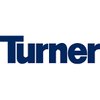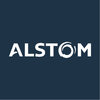
i
Shimizu
Filter interviews by
Shimizu Civil Quality Engineer Interview Questions and Answers
8 Interview questions
A method statement outlines the procedures for safely erecting a Pre-Engineered Building (PEB).
Site Preparation: Clear and level the site, ensuring proper drainage.
Foundation Work: Construct concrete foundations based on engineering specifications.
Delivery and Inspection: Receive PEB components, checking for damage and compliance with specifications.
Erection Sequence: Follow a systematic approach, starting with th...
Cladding sheet thickness varies based on material and application, typically ranging from 0.5mm to 3mm.
Common materials include aluminum, steel, and composite materials.
For residential buildings, cladding sheets are often around 1mm to 2mm thick.
In industrial applications, thicker sheets (up to 3mm) may be used for durability.
The thickness can also depend on local building codes and environmental factors.
PLT measures soil bearing capacity, while compaction tests assess soil density and stability.
Plate Load Test (PLT) evaluates the bearing capacity of soil under a load, simulating real-world conditions.
Compaction Test determines the maximum density of soil and its moisture content, ensuring proper soil compaction for construction.
PLT is typically performed on-site with a large plate and hydraulic jack, while compac...
Roof sheets vary in grade and thickness based on material and application, impacting durability and insulation.
Material Types: Common materials include galvanized steel, aluminum, and fiberglass, each with different grades and thicknesses.
Thickness Range: Roof sheet thickness typically ranges from 0.4 mm to 1.2 mm, with thicker sheets offering better durability.
Grade Specifications: For example, a grade of G550 in...
Soil compaction tests assess the density and stability of soil for construction projects, ensuring proper load-bearing capacity.
1. Collect soil samples from the site using a hand auger or shovel.
2. Determine the moisture content of the soil sample by weighing it before and after drying.
3. Use a compaction mold and a rammer to compact the soil in layers, typically in three layers for the Proctor test.
4. Measure the...
ITP stands for Inspection and Test Plan, crucial for ensuring quality control in construction projects.
ITP outlines the specific inspections and tests required at various stages of a project.
It helps in identifying quality standards and acceptance criteria for materials and workmanship.
For example, an ITP for concrete might include slump tests, compressive strength tests, and curing observations.
ITPs ensure compli...
A Quality Assurance Plan outlines quality objectives, while an Inspection Test Plan details specific inspections and tests.
Quality Assurance Plan (QAP): A strategic document that defines quality objectives, policies, and procedures for a project.
Inspection Test Plan (ITP): A tactical document that specifies the inspections and tests to be performed, including their frequency and acceptance criteria.
Example of QAP:...
A Quality Assurance Plan (QAP) outlines processes to ensure project quality standards are met throughout construction.
Defines quality objectives and standards for the project.
Outlines roles and responsibilities for quality assurance.
Includes procedures for inspections and testing, e.g., concrete strength tests.
Specifies documentation requirements, such as quality control reports.
Identifies risk management strategi...
Shimizu Civil Quality Engineer Interview Experiences
1 interview found
I appeared for an interview in Oct 2024, where I was asked the following questions.
- Q1. What is the method statement for the erection of a Pre-Engineered Building (PEB)?
- Ans.
A method statement outlines the procedures for safely erecting a Pre-Engineered Building (PEB).
Site Preparation: Clear and level the site, ensuring proper drainage.
Foundation Work: Construct concrete foundations based on engineering specifications.
Delivery and Inspection: Receive PEB components, checking for damage and compliance with specifications.
Erection Sequence: Follow a systematic approach, starting with the mai...
- Q2. What is the difference between the Plate Load Test (PLT) and the compaction test for soil?
- Ans.
PLT measures soil bearing capacity, while compaction tests assess soil density and stability.
Plate Load Test (PLT) evaluates the bearing capacity of soil under a load, simulating real-world conditions.
Compaction Test determines the maximum density of soil and its moisture content, ensuring proper soil compaction for construction.
PLT is typically performed on-site with a large plate and hydraulic jack, while compaction ...
- Q3. What is the grade and thickness of the roof sheet?
- Ans.
Roof sheets vary in grade and thickness based on material and application, impacting durability and insulation.
Material Types: Common materials include galvanized steel, aluminum, and fiberglass, each with different grades and thicknesses.
Thickness Range: Roof sheet thickness typically ranges from 0.4 mm to 1.2 mm, with thicker sheets offering better durability.
Grade Specifications: For example, a grade of G550 indicat...
- Q4. What is the procedure for conducting a soil compaction test?
- Ans.
Soil compaction tests assess the density and stability of soil for construction projects, ensuring proper load-bearing capacity.
1. Collect soil samples from the site using a hand auger or shovel.
2. Determine the moisture content of the soil sample by weighing it before and after drying.
3. Use a compaction mold and a rammer to compact the soil in layers, typically in three layers for the Proctor test.
4. Measure the heig...
- Q5. What is a Quality Assurance Plan (QAP)?
- Ans.
A Quality Assurance Plan (QAP) outlines processes to ensure project quality standards are met throughout construction.
Defines quality objectives and standards for the project.
Outlines roles and responsibilities for quality assurance.
Includes procedures for inspections and testing, e.g., concrete strength tests.
Specifies documentation requirements, such as quality control reports.
Identifies risk management strategies to...
- Q6. What does ITP stand for and what is its significance?
- Ans.
ITP stands for Inspection and Test Plan, crucial for ensuring quality control in construction projects.
ITP outlines the specific inspections and tests required at various stages of a project.
It helps in identifying quality standards and acceptance criteria for materials and workmanship.
For example, an ITP for concrete might include slump tests, compressive strength tests, and curing observations.
ITPs ensure compliance ...
- Q7. What is the difference between a Quality Assurance Plan (QAP) and an Inspection Test Plan (ITP)?
- Ans.
A Quality Assurance Plan outlines quality objectives, while an Inspection Test Plan details specific inspections and tests.
Quality Assurance Plan (QAP): A strategic document that defines quality objectives, policies, and procedures for a project.
Inspection Test Plan (ITP): A tactical document that specifies the inspections and tests to be performed, including their frequency and acceptance criteria.
Example of QAP: A QA...
- Q8. What is the thickness of the cladding sheet?
- Ans.
Cladding sheet thickness varies based on material and application, typically ranging from 0.5mm to 3mm.
Common materials include aluminum, steel, and composite materials.
For residential buildings, cladding sheets are often around 1mm to 2mm thick.
In industrial applications, thicker sheets (up to 3mm) may be used for durability.
The thickness can also depend on local building codes and environmental factors.
Interview Preparation Tips
Top trending discussions






Interview questions from similar companies

Senior Civil Engineer Interview Questions & Answers
Turner Constructionposted on 12 Nov 2024
I applied via Recruitment Consulltant
(1 Question)
- Q1. Will ask Technical Questions Related to Projects.
(1 Question)
- Q1. Will ask about past companies experience and role, responsibility etc.

I applied via Referral and was interviewed before Mar 2023. There was 1 interview round.
(1 Question)
- Q1. How do you calculate the excavation soil mass?
- Ans.
Excavation soil mass can be calculated by determining the volume of the soil and its density.
Calculate the volume of the excavation area by multiplying the length, width, and depth of the area.
Determine the density of the soil being excavated.
Multiply the volume of the excavation area by the density of the soil to get the excavation soil mass.
For example, if the excavation area is 10m x 5m x 2m and the soil density is ...
Interview Preparation Tips

Software or tool test
(2 Questions)
- Q1. Related to technical question about fabrication.
- Q2. Tool related question

Interview Questionnaire
6 Questions
- Q1. They were asked about previous work experience in detail.
- Q2. Previous Project details.
- Q3. Previous projects shuttering area and type of formwork
- Ans.
The previous projects involved various types of formwork with a total shuttering area of approximately 10,000 square meters.
Used traditional timber formwork for a residential building project
Implemented modular steel formwork for a commercial complex
Utilized aluminum formwork for a high-rise construction
Employed tunnel formwork for an underground structure
- Q4. Build-up area
- Q5. About subcontractors billing.
- Ans.
Subcontractor billing involves invoicing for completed work, ensuring accuracy and compliance with contract terms.
Review the subcontractor's work against the contract to ensure all billed items are completed.
Verify quantities and rates in the invoice match the agreed terms.
Ensure that any change orders are documented and included in the billing.
Example: If a subcontractor billed for 100 cubic yards of concrete, confirm...
- Q6. Formwork,steel and masonry work daily productive
Interview Preparation Tips

I applied via Naukri.com and was interviewed in May 2021. There were 3 interview rounds.
Interview Questionnaire
3 Questions
- Q1. What is the height of top guard rails,mid rails and toe board rails?
- Ans.
The height of top guard rails, mid rails, and toe board rails varies depending on the specific application and regulations.
The height of top guard rails is typically between 42 and 45 inches above the walking surface.
Mid rails are typically located halfway between the top rail and the walking surface.
Toe board rails are typically between 4 and 6 inches high and are installed at the base of the guardrail system.
Specific...
- Q2. What is safe working load and formula?
- Ans.
Safe working load is the maximum weight a structure or equipment can safely support without risk of failure.
SWL is determined by factors such as material strength, design, and intended use.
Formula for SWL varies depending on the type of equipment or structure.
For example, the SWL formula for a crane may take into account the boom length, angle, and weight distribution.
It is important to always follow the manufacturer's...
- Q3. Job role and duties of HSE engineer
- Ans.
HSE engineers ensure health, safety, and environmental standards are met in various industries to protect workers and the environment.
Conduct risk assessments to identify potential hazards in the workplace.
Develop and implement safety policies and procedures, such as emergency response plans.
Monitor compliance with health and safety regulations, ensuring adherence to local and international standards.
Provide training a...
Interview Preparation Tips

I applied via Recruitment Consulltant and was interviewed before May 2021. There was 1 interview round.
(4 Questions)
- Q1. What is blinding? Different types of blinds used in o&g?
- Ans.
Blinding is the process of isolating a section of a pipeline or equipment to prevent flow or contamination.
Temporary or permanent blinds can be used depending on the situation
Common types of blinds include spectacle blinds, paddle blinds, and bleed rings
Blinding is often used during maintenance or repair work to ensure safety
Blinding can also be used to prevent contamination during storage or transportation
Blinding can...
- Q2. Procedures before starting a work in a refinery equipment,
- Ans.
Before starting work in a refinery equipment, certain procedures must be followed.
Obtain a work permit
Perform a safety check of the equipment
Ensure proper personal protective equipment is worn
Verify that all valves are in the correct position
Confirm that the equipment is properly grounded
Check for any leaks or abnormal conditions
Communicate with other workers in the area
Follow all established procedures and protocols
- Q3. What will you do if there's an H2S leak and there's no wind movement,
- Ans.
I will follow the emergency response plan and evacuate the area immediately.
Activate the alarm system to alert others in the area
Put on personal protective equipment (PPE) including a respirator
Evacuate the area immediately and move to a safe location
Notify emergency services and follow the emergency response plan
Monitor the situation and wait for the all-clear signal before returning to the area
- Q4. From where you'll advice your workers to start unbloting a heat exchanger head?
- Ans.
I would advise my workers to start unbolting the heat exchanger head from the top and work their way down.
Start from the top and work your way down
Use appropriate tools and safety equipment
Follow proper procedures and guidelines
Ensure all bolts are properly labeled and accounted for
Inspect the gasket and replace if necessary
Interview Preparation Tips

I applied via Naukri.com and was interviewed before Apr 2023. There were 3 interview rounds.
(1 Question)
- Q1. Genral intruduction
- Ans.
I am a dedicated engineer with a passion for innovation and problem-solving in various engineering fields.
Educational Background: Bachelor's degree in Engineering from XYZ University.
Work Experience: 2 years as a Junior Engineer at ABC Company, focusing on project management.
Technical Skills: Proficient in AutoCAD, MATLAB, and project management software.
Soft Skills: Strong communication and teamwork abilities, demonst...
(1 Question)
- Q1. Based on your resume
(1 Question)
- Q1. Based in your resume

I applied via Referral and was interviewed in Dec 2023. There was 1 interview round.
(1 Question)
- Q1. Explain hydration
- Ans.
Hydration is the process of providing adequate fluids to the body to maintain proper function.
Hydration is essential for overall health and well-being
It helps regulate body temperature, transport nutrients, and remove waste
Drinking water, consuming fruits and vegetables, and electrolyte-rich beverages are ways to stay hydrated

No GD
(1 Question)
- Q1. Base question for civil
Interview Preparation Tips
Shimizu Interview FAQs
Some of the top questions asked at the Shimizu Civil Quality Engineer interview -
Tell us how to improve this page.
Shimizu Interviews By Designations
- Shimizu Project Manager Interview Questions
- Shimizu Senior Executive Interview Questions
- Shimizu Civil Quality Engineer Interview Questions
- Shimizu Engineer Interview Questions
- Shimizu Senior Site Engineer Interview Questions
- Shimizu Graphic Designer Interview Questions
- Shimizu Auto CAD Draftsman Interview Questions
- Shimizu QA QC Engineer Interview Questions
- Show more
Interview Questions for Popular Designations
- Quality Engineer Interview Questions
- Junior Engineer Interview Questions
- Civil Site Engineer Interview Questions
- Civil Engineer Interview Questions
- Assistant Engineer Interview Questions
- Senior Civil Engineer Interview Questions
- Billing Engineer Interview Questions
- Senior Site Engineer Interview Questions
- Show more
Overall Interview Experience Rating
based on 2 interview experiences
Difficulty level
Duration
Interview Questions from Similar Companies
Shimizu Civil Quality Engineer Reviews and Ratings
based on 1 review
Rating in categories
|
Assistant Manager
16
salaries
| ₹10.5 L/yr - ₹16 L/yr |
|
Civil Site Engineer
13
salaries
| ₹3.5 L/yr - ₹8 L/yr |
|
Assistant Construction Manager
12
salaries
| ₹11.1 L/yr - ₹15 L/yr |
|
Safety Officer
10
salaries
| ₹2.4 L/yr - ₹8 L/yr |
|
QA QC Engineer
9
salaries
| ₹3.6 L/yr - ₹8 L/yr |

Alstom Transportation

Saint-Gobain

AECOM

AtkinsRealis
- Home >
- Interviews >
- Shimizu Interview Questions











